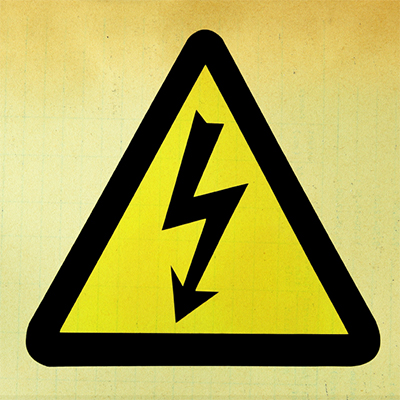
Some of the hazards with using electricity are:
- Shock and burns caused by contact with ‘live’ parts
- Faulty wires, cables, plugs and electrical appliances which can cause burns. Christmas trees are known for causing fires when the lights are left on continuously.
- Drilling into a wall where there are cables in it
What are the risks from electricity?
If a person comes into contact with ‘live’ parts where there is an electric current, there is a risk of harm. Voltages over 120 volts DC are hazardous and exposure to this level of current must be managed and controlled by the employer.
Who is at risk of electric shock?
The risk extends to everyone at work who can potentially be exposed to the dangers of electricity. Different work environments may have a higher risk, these include construction projects, however on occasion, low risk environments can be most harmful as they may be less controlled on a day to day basis. Due to historical incidents, construction sites are aware of the dangers and are now very controlled. In a low risk environment, the control may be weak due to the belief that it is of low risk.
Everyone is aware that coming into contact with an electric current carries a risk. Some of the reasons an incident may occur is because:
- Visual inspections of equipment are not undertaken before use and the person does not notice frayed or cut wires
- The person working with electricity doing repairs to equipment is not competent
- Electrical equipment is used which is faulty but the person is not aware
- Electric wiring may be live but the person working near may be unaware of this and be at risk
Recommendation for controlling the risk
- Ensure the building has fixed wiring testing done periodically. Ensure fixed installations are inspected and tested periodically by a competent person. The frequency of inspections and testing will depend on the type of installation, how often it is used, and the environment in which it is used
- Ensure a competent electrician has completed any alternations and installations
- Ensure all staff are aware of the hazards of electricity
- Ensure all equipment from computers, kettles and other equipment with a plug are part of the Portal Appliance Testing (PAT) regime
- Ensure that where electrical equipment is used in hazardous environments (e.g. extremes of weather, temperature, corrosive conditions) then it is protected to prevent it becoming dangerous
- Ensure all staff understand how to carry out simple visual checks on the equipment before they use it
- The competent electrician will need to ensure that a Residual Current Device (RCD) is installed where required
- Ensure by checking visually that sockets are not overloaded
- Do not allow taped joints to any appliance even as a temporary measure
- Check that the correct cable connectors or couplers that join lengths of cables together are used
- Carry out checks at planned regular intervals checking for splits in cable, exposed wiring, lose wring and unsafe connections
QCS Policies
QCS have guidance and policies to support your service in meeting the requirements of health and safety.



